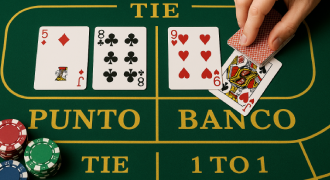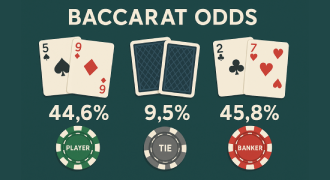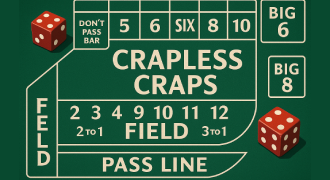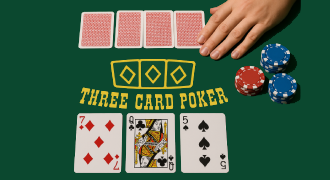Texas Hold’em Poker Guide: Rules, Hands, and Tips
From the first shuffle to the last river card, Texas Hold’em rewards patience, observation, and disciplined risk. Newcomers discover Texas Holdem poker that blends simple structure with deep strategy, while veterans chase thin value, balance ranges, and manage tilt across long sessions. Learn pace, positions, and probabilities, then add creative pressure at the right moments to turn marginal spots into sustainable edges over time.
The following guide lays out rules, combinations, formats, and practical advice for live rooms and digital venues. You will see how structure guides decisions, how board textures transform equity, and how stack depth reshapes priorities on every street. With clear fundamentals and focused practice, your choices become crisper, your reads more accurate, and your results steadier in diverse environments and stakes.
What is Texas Hold’em?
At its core, Hold’em is a community-card casino game where each participant receives two private cards and combines them with five shared cards to make the best five-card combination. The cadence is built around forced wagers called blinds, positional advantage that rotates each hand, and betting rounds that unfold as new public information arrives. Pot geometry and stack sizes drive the incentives behind aggression, calls, and folds.
Players often ask, “What is Texas Holdem poker?” The concise answer is a betting contest rooted in incomplete information and probability. Another frequent phrase is Texas Holdem poker game, which points to a family of formats that share a core structure while varying limits, antes, and payout schemes across cash and tournament play.
Understanding Community Card Structure
The seven total cards available to each player are divided into two private hole cards and five community cards (flop, turn, river). Everyone can use all, some, or none of their privates to assemble the best five-card set. Texture categories—dry, semi-dry, and wet—offer a quick shorthand for how aggressively players should protect value or apply pressure. The clarity of these patterns forms the backbone of solid decision-making under standard Texas Holdem poker rules.
Beginner’s Cheat Sheet:
|
🔑 Aspect |
📖 Explanation |
|
🎯 Goal |
Make the best 5-card hand using 2 private + 5 community cards |
|
🃏 Hole Cards |
Each player receives 2 private cards |
|
🌐 Community Cards |
5 shared cards: Flop (3), Turn (1), River (1) |
|
💵 Blinds |
Forced wagers to seed the pot (Small Blind, Big Blind) |
|
🔄 Positions |
Dealer button rotates; later positions = more information |
|
📊 Board Texture |
Dry / Semi-dry / Wet → guides betting aggression and protection of value |
|
🏆 Hand Assembly |
Combine hole + community cards for strongest 5-card hand |
|
💡 Strategy Tip |
Consider stack size, pot geometry, and board texture when deciding bet, call, or fold |
|
🎲 Game Formats |
Cash games, tournaments, and varying ante/limit structures |
Texas Hold’em Rules for Beginners
If you are learning how to play Texas Holdem poker, start by mastering position, blinds, and the order of action. Two forced bets—the small and big blind—seed the pot and incentivize participation. Action proceeds clockwise, with each player choosing to fold, call, or raise according to stack considerations and range construction. Rounds progress from pre-flop to river as shared cards emerge and equities shift.
A clean grasp of etiquette and mechanics reduces costly mistakes. Protect your cards, announce intentions clearly, and size bets in a consistent manner to avoid string actions. Understanding the cadence is part of learning Texas Holdem poker, and it builds the confidence needed to experiment with selective aggression and well-timed bluffs.
Hole Cards and Community Cards
Your two privates define a starting range that narrows or expands with board development. Suited connectors excel when stacks are deep and implied odds are high, while offsuit broadways shine as top-pair candidates against shorter stacks. Reading opponent tendencies matters just as much as starting selection when evaluating Texas Holdem poker hands.
Betting Rounds: Pre-Flop to River
Pre-flop ranges widen in late positions and tighten under early action. The flop creates the first major equity inflection, the turn doubles down on pressure or pot control, and the river resolves thin value and polarized bluffs. Seat choice, bet sizing, and timing all carry weight at a Texas Holdem poker table.
Hand Rankings in Texas Hold’em
The hierarchy runs from high card up to royal flush, with straights and flushes relying on consecutive ranks and suit coordination. Sets and two pairs leverage blocker effects and removal, especially in lines where earlier streets capped an opponent’s range. Rare holdings dominate, but most profit comes from extracting value with second-best textures against capped continuations.
Study charts that outline Texas Holdem poker hands for Texas Holdem and you will recognize how kickers break apparent ties and why certain combos spike in value on paired or monotone boards. The ranking ladder is also a practical anchor for reviewing hands after sessions and identifying leaks. As you internalize patterns, your instincts align with the math behind Texas Holdem poker.
Best Possible Hands
Royal flushes and straight flushes are statistical rarities that rarely drive your bottom line. Sets, two pairs, and strong top pairs with robust kickers generate the day-to-day return. When you chase, favor nut draws and combo-draws that can win unimproved via fold equity or capture maximum value on clean runouts. Pairing accuracy with discipline turns medium-strength holdings into steady earners.
Debates about poker vs Texas Holdem often highlight how community cards reshape strategy.
Understanding Kickers in Ties
When two players share the same primary rank—top pair or trips—the next highest side card determines the winner. This secondary value becomes decisive on dry textures where the board offers few draws. Appreciating the role of kickers helps you size thin bets correctly and avoid overvaluing marginal pairs in contested pots.
Betting Structures
Limit options shape incentives. No-limit creates powerful leverage with stack-to-pot ratio dynamics that reward pressure and value targeting. Pot-limit tempers extremes while preserving meaningful raises. Fixed-limit transforms play into a street-by-street equity contest with careful pot odds and disciplined folds. Each structure changes frequencies, sizing norms, and bluff-to-value ratios.
Many players first experience structured play on regulated platforms that host Texas Holdem poker online. The same fundamentals apply, but pacing accelerates and reads shift from physical mannerisms to timing, population tendencies, and numeric patterns. Regardless of venue, the core language remains Texas Holdem poker.
No-Limit, Pot-Limit, and Limit Games
In no-limit, position and stack depth magnify small edges into full-stack swings. Pot-limit keeps bet sizing tied to the current pot, curbing all-in pressure while preserving maneuvering space. Fixed-limit reduces volatility but punishes leaks in starting selection and turn discipline because you cannot price opponents out as easily.
Getting Started with Texas Hold’em
Build habits that support consistent growth: track results, tag tricky spots for review, and practice range construction away from the felt. Start at conservative stakes and move up only when your win rate and bankroll justify the change. Use pre-flop charts as training wheels, then adapt them to table dynamics and opponent profiles as your judgment matures.
|
🎰 Provider |
🎯 Paylines |
🔖 Paying Symbols |
🎁 Bonus Features |
🎲 RTP |
💵 Min Bet |
|
🃏 HoldEm Spinworks |
25 |
A, K, Q, J, 10; 🎲 Chip Scatter; 🅰️ Ace Wild |
🎡 Free Spins, ✨ Win Multipliers, 🎰 Pick Bonus |
97.1% |
$0.20 |
RTP explanation: The RTP is 97.1%, which is a long-run statistical expectation calculated across millions of spins, implying an average return of $97.10 per $100 wagered over a vast sample. Real sessions can deviate significantly because variance clusters results, so bankroll management remains essential. The minimum bet is $0.20, allowing cautious trials before scaling stakes. Volatility is medium, meaning moderate dry spells punctuated by feature hits; aim for structured session lengths, predefined stop-loss levels, and measured bet ramping after bonuses to manage swings responsibly.
If you prefer mobile tools, consider a single-tap installation path that mirrors lobby filters and quick-seat shortcuts. One sentence might highlight Texas Holdem poker download. Another sentence can mention Texas Holdem poker app to streamline access and reminders for study breaks between sessions.
Strategy Tips for Players
Play fewer pots out of early positions and widen carefully as your seat improves. Attack capped ranges with well-timed raises on textures that favor your holdings, and defend your checking lines by mixing more calls with backdoor potential. Table image matters, so pair your bluffs with natural value candidates to keep frequencies coherent. A reliable mental model anchors adjustments around stack depth, opponent type, and blocker effects, all within the grammar of Texas Holdem poker.
Tournament vs Cash Game Differences
Cash games focus on deep-stack maneuvering and consistent hourly win rates, with rebuys repairing variance. Tournaments add ICM pressure, pay-jump tactics, and bubble leverage that amplify fold equity and risk management. Antes accelerate action in later levels, so pre-flop steal frequencies rise while post-flop lines skew toward shorter SPR decisions to protect stack utility. Study push-fold charts to sharpen late-stage precision and avoid marginal bust-outs.
Mastering Texas Hold’em Poker
Mastery arrives in layers: first mechanics, then structure, then calibrated aggression. Review sessions by reconstructing ranges street by street, not just by result. Prioritize clarity over cleverness in contested pots, and let disciplined folds carry as much pride as highlight-reel bluffs. Sustainable growth lives in small, repeatable edges that compound across thousands of hands and countless decisions.
Whether you play casually with friends or grind structured stakes in regulated rooms, keep your process steady. Choose targets you can quantify, create study loops that close with action steps, and protect your energy with good breaks and realistic goals. The game rewards patience, precision, and curiosity far more than impulse or bravado.
FAQ
How many cards are dealt in Hold’em?
Each participant receives two private cards. Five shared cards are revealed across three streets called flop, turn, and river, and the best five-card combination wins at showdown.
What is the best starting hand?
Pocket aces rank at the top, but profitability depends on position, stack depth, and opponent tendencies. Suited broadways and high pocket pairs follow, with speculative suited connectors gaining power when stacks are deep.
How do blinds rotate?
After each hand, the dealer marker moves one seat clockwise. The positions immediately to the left post the small and big blind in turn, ensuring that forced bets and positional advantage rotate evenly around the layout.
Can Hold’em be played online?
Yes, regulated platforms host games around the clock with a broad range of stakes and formats, including fast-fold variants and multi-table tournaments. Digital play emphasizes timing reads, population tendencies, and disciplined bankroll management.
Is bluffing necessary to win?
Bluffing is part of balanced strategy, but selective aggression works best when supported by credible storylines and blocker logic. Value extraction from dominated ranges remains the primary engine of long-term profit.









